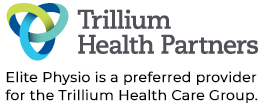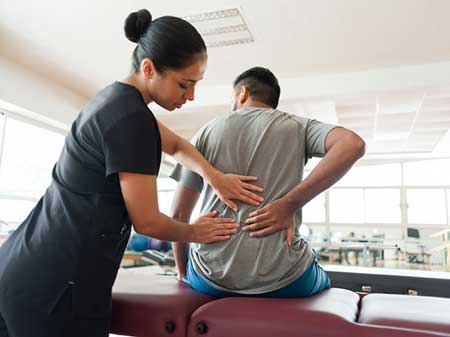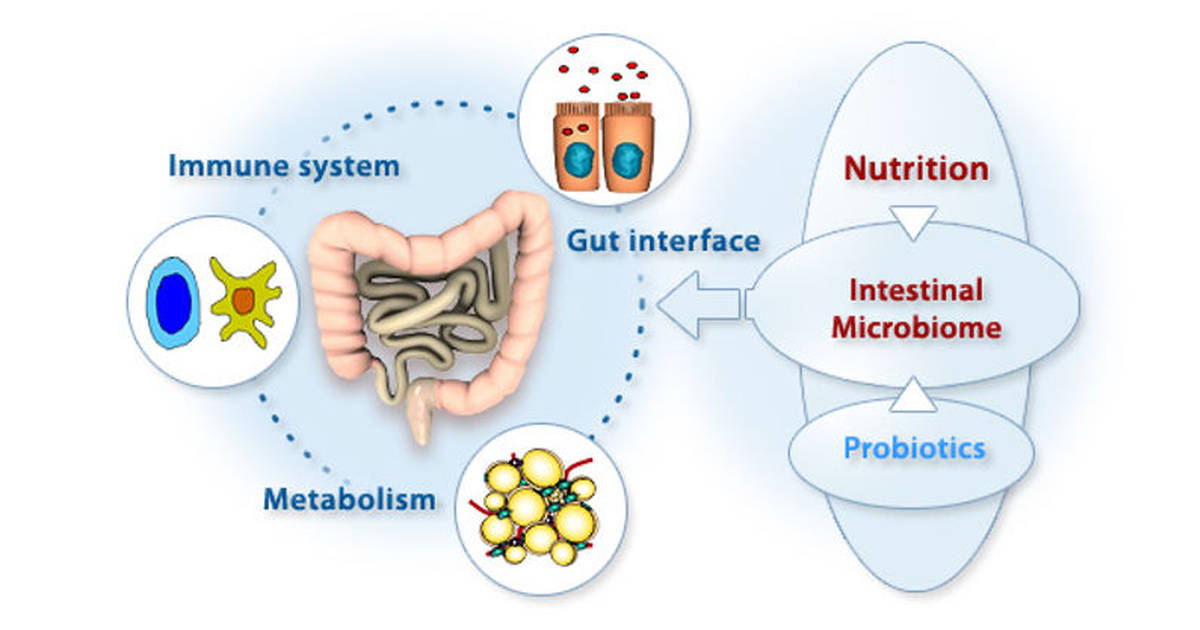Personal Protective Equipment and Headaches in Frontline Health Care Workers

By: Dr. Patricia Farrell
This March, a study was conducted that aimed to determine the risk factors associated with the development of headaches in health care workers wearing Personal Protective Equipment (PPE). Different types of PPE include face masks, face shields, protective eye-wear, and gloves, just to name a few. For the purpose of this study, N95 masks and protective eyewear (goggles or face shields) were investigated. It is no surprise that due to the unfortunate circumstances of COVID-19, the use of PPE has greatly increased among healthcare workers, and the general public.
When masks are fit properly, they form a tight seal against the wearers face in order to provide respiratory protection. In addition, protective eyewear (most common,
goggles), must also fit properly, which results in tightening of the straps around ones head.
If we look at the image below, we can see where the edges of the face mask and goggles contact the head. In addition, we can see where the position of the straps are around the head and neck.
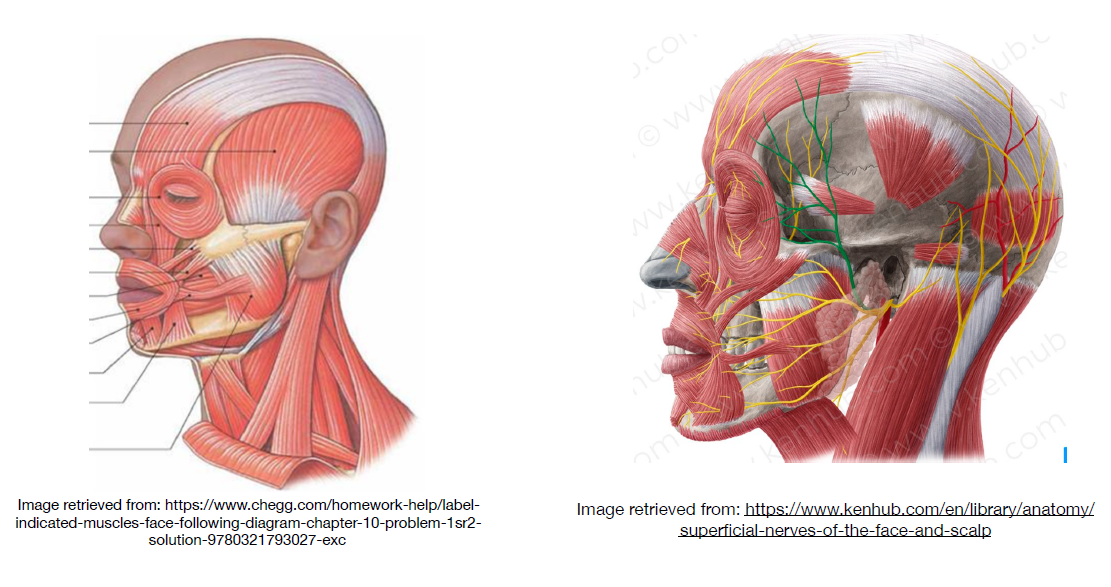
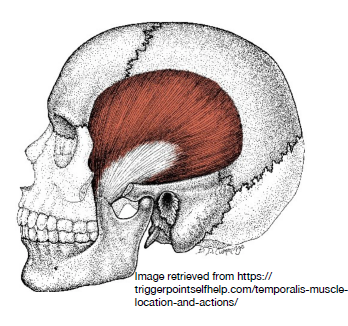
To no surprise, all of the participants in this study reported an increased frequency of PPE usage and exposure since the outbreak of COVID-19. Most participants wore the mask, goggles, or both, for almost 6 hrs/day (presumably on working days). 81% of participants reported new headaches when wearing the face mask, with or without goggles. Most of the location of discomfort experienced by participants corresponded to the areas of contact from the face mask, or goggles and their head straps. They described a sensation of heaviness or pressure along these sites, and sometimes throbbing. Majority of headaches began within 60 minutes of wearing the equipment, and resolved within 60 minutes of removing the equipment, however, symptoms may last longer. If we look at the images below, we can see that the anatomy of the head and face is very detailed and intricate and there are many muscles and nerves involved.
The cause of headaches in this population could be due to many underlying factors, including sleep deprivation, emotional stress, irregular meal times, inadequate hydration, just to name a few. However, based on the location of the headaches, and fact that the onset and offset of the headaches corresponded to the use of the PPE, it is more likely a mechanical and anatomical cause for the headaches and facial pain. The pressure from the mask and/or goggles, with their straps, may also lead to local tissue damage, which may thus exert an irritative effect on the superficial sensory nerves that innervate the face, head, and neck. In addition, the strain on the neck from the equipment may also lead to the development of tension type or cervicogenic headaches.
So, what can we do with all of this information? Here are a few tips you can try at home or at work to help prevent and/or relieve some of these symptoms.
- Find your temporalis muscle (the one above your ears) – you can do this by drawing a line from your cheekbones, straight back towards your ear. You can also find this by clenching down with your teeth and feeling the muscle “pop up” under your fingers”
- Once you find a tender spot, hold this for 10 seconds. Then find another tender spot and hold this (Image 1).
- Find a tender spot and gently move your fingers in circles and give a light massage to this area (image 1).
- Once contacting the muscle, maintain a light pressure as you open and close your mouth. This will actively release the muscle (Image 2 & 3).
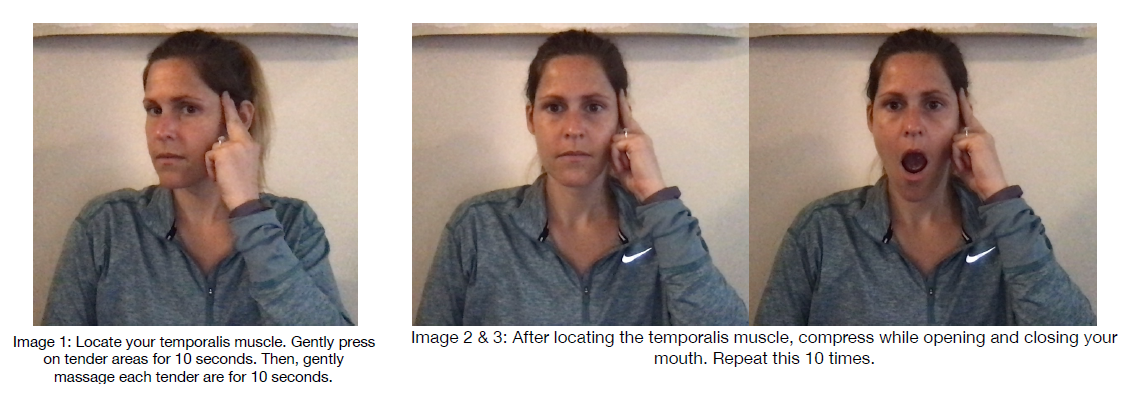
5. Massage along the bridge of your nose into your cheekbones under your eyes. Repeat this several times (Image 4 & 5).

6. Perform a chin tuck and pull your head gently downwards. Repeat this looking down and rotated to each side (Image 6 & 7).
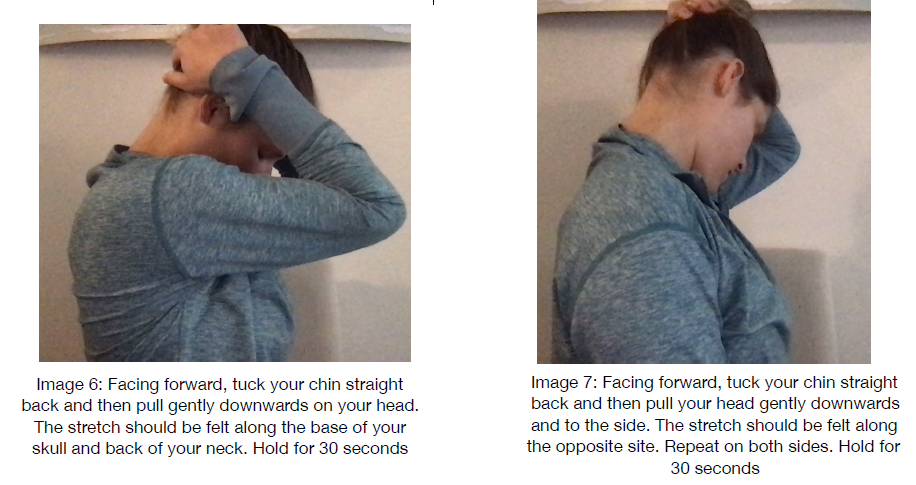
7. Lightly massage above your eye brows in a circular or upwards direction (Image 8).

If you are experiencing any PPE related headaches, give these exercises a try. If things persist and you begin noticing unusual symptoms such as dizziness, nausea, or sensitivity to light, feel free to give the clinic a call and one of our therapists would be more than happy to assist you.
And most importantly, to all of the healthcare providers on the frontline, THANK YOU! We appreciate you, and we are here for you.

